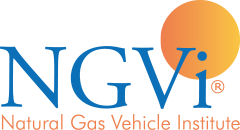By Annalloyd Thomason, Vice President/General Manager, NGVi
During the recent American Trucking Association’s Technology Maintenance Council, I attended the “CNG Tank Inspection” Task Force meeting, and I could not believe what I was hearing. The chair of the Task Force was putting forth the position that “CNG tank inspections” are very simple, straightforward processes that can be learned from a handbook or DVD-based training course. He also hypothesized that technicians do not require the level of training and certification being advocated by the NGV industry today.
Based on our 25 years’ of experience training NGV technicians, I expressed my strong disagreement with that position. Fortunately, my opinion was shared by most of the vehicle manufacturers and current NGV users in the room. Here are a few reasons why minimizing the knowledge and skills required to conduct a thorough CNG fuel system inspection is at a minimum foolish and at its maximum, downright dangerous.
Technicians New to NGVs Are Unfamiliar with High-Pressure Gaseous Fuel Systems
Most technicians working in dealerships or fleet operations are highly familiar with diesel or gasoline systems. As NGVs are introduced, technicians have no knowledge of a high-pressure gaseous fuel system and how very different they are from liquid fuels. Unless a technician has been properly trained, they may “learn” maintenance practices that are unsafe—and they may unwittingly pass these along to their co-workers. The first step in ensuring safety for technicians charged with the task of conducting CNG fuel system inspections is thorough training on the components and safety practices specific to NGVs. This doesn’t happen by reading a handbook or watching a DVD training course—it happens most effectively with a combination of instructor-led and hands-on training.
High-Pressure Can Be a Serious Safety Hazard
Pressure is the number one safety hazard of CNG-powered vehicles. CNG is stored onboard natural gas vehicles at 3,600 pounds per square inch (psi). Although these vehicles are equipped with extraordinary safety features, an incident resulting from undetected external damage to the CNG fuel system can cause severe bodily harm or even death. CNG fuel system inspections are designed to detect damage to any component of the system, including the cylinders, so that unnecessary safety risks are not taken and ultimately lives are not jeopardized.
CNG Fuel System Components and Their Possible Damage Scenarios Are Unfamiliar to New NGV Technicians
Damage to CNG fuel systems, including cylinders, comes in many shapes and forms and is not always easy to identify. When conducting the detailed visual inspection, NGV technicians must examine all high-pressure natural gas components including cylinders, brackets, valves, fittings, lines, regulator, coalescing filter, fuel receptacle, and shields in addition to the installation or mounting of those components.
If technicians have not had thorough training, including applicable hands-on practice in identifying, measuring and classifying damage levels, they are not prepared to do their jobs properly.
Codes and Standards Governing CNG Fuel Systems Are Detailed and Require Application and Interpretation
Technicians who perform CNG fuel system inspections require both knowledge of codes and standards for CNG fuel system installation as well as skill in applying that knowledge. They must be able to readily interpret and apply codes and standards covering CNG fuel system components, identify and describe NGV industry documents, and understand mandated inspection requirements. The codes involved include U.S. DOT FMVSS 304, ANSI/CSA NGV 2, NFPA 52, ANSI/CSA PRD 1, ANSI/CSA NGV 3.1, and CGA C-6.4. Additionally while performing each fuel system inspection, the inspector must have access to and be able to understand and properly apply the cylinder manufacturer’s maintenance and repair guide. This is not “nice to know” information—it is essential information to perform their jobs.
Safety and Risk Management Are the Number One Goals
The bottom line is this: responsible NGV fleet operators and servicing dealers have safety of employees, customers and the general public as their number one goal. The topic of safety is often minimized in the minds of management until there is an incident involving the CNG fuel system. If this occurs, the vehicle owner, the CNG fuel system inspectors and numerous other organizations up the “food chain” (such as manufacturers or distributors) likely will be named in litigation. Everyone involved in the process could only hope that the technicians who provided the CNG fuel system inspection have been well trained, certified and followed CNG fuel system inspection procedures to the letter—including documentation.
Yes, NGVs are new territory for most technicians. Yes, CNG fuel system inspections are an unfamiliar task. Yes, there is a cost associated with training and certifying technicians to conduct effective CNG fuel system inspections. But in the long run, it would be irresponsible to minimize—or even skip—the process of training technicians to perform a job that might save lives.
